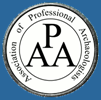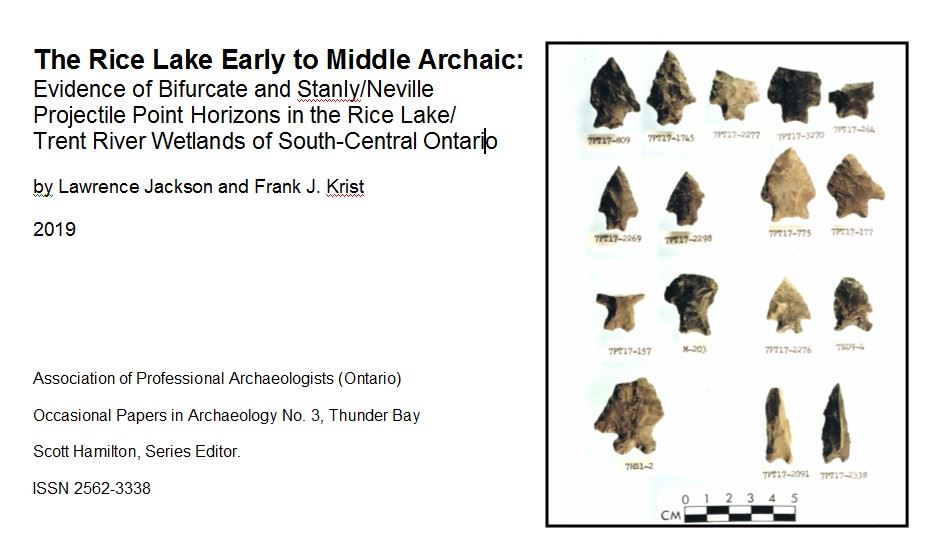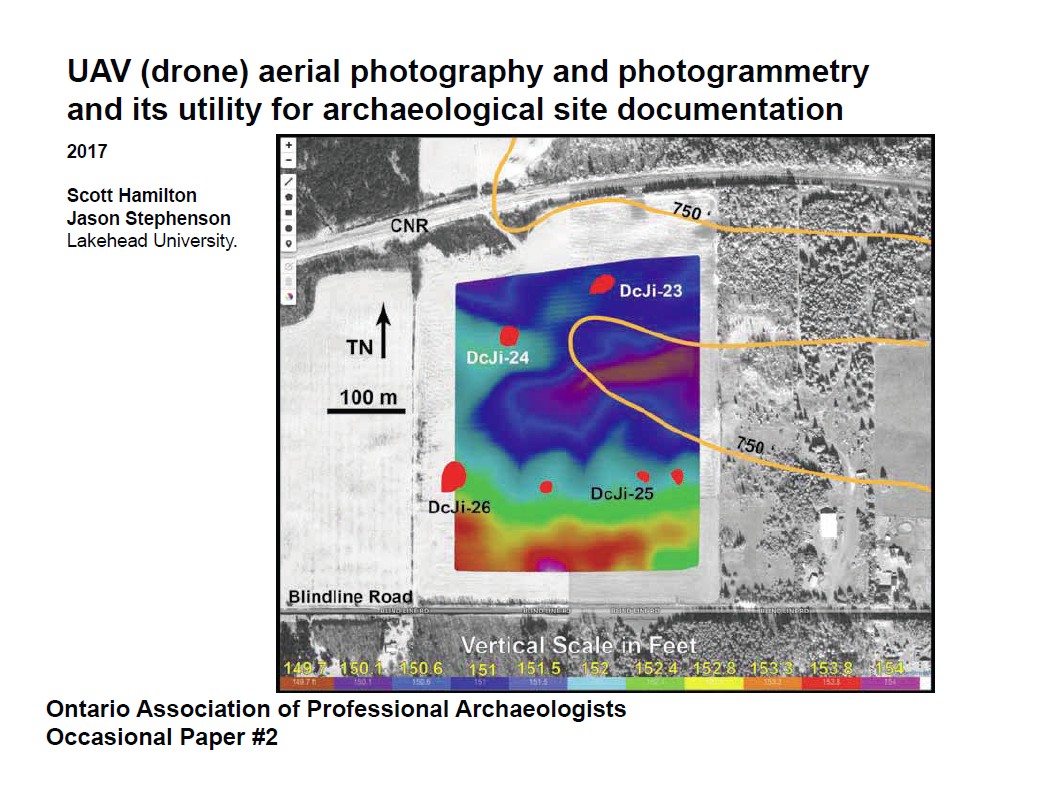-
-
-
-
-
-
-
-
APA Publications and Reports
-
-
-
-
-
-
-
-
-
-


Association of Professional Archaeologists (Ontario)Newsletter Archives: view our newsletter collection (.pdf) click here~ Occasional Papers and Reports in Archaeology ~Authors are welcome to submit their manuscript for online publication in the APA Occasional Papers Series: contact editor Scott Hamilton at shamilto@lakeheadu.ca. Suitable manuscripts may include unpublished conference papers, Cultural Resource Management Reports or articles of interest to the archaeological community at large. *Note: APA Ontario members have complimentary access to all articles. To read about becoming a member, click here. ~~~~~~~~~~~~~~~~~~~~~~~~~~~~~~~~~~~~~~~~~~~ Visit APA's Online Store to purchase a full-colour .pdf version of any of the publications in our Occasional Papers Series. Our Online Store also facilitates orders of members' publications, so be sure to check out the growing variety of titles! |
~~~~~~~~~~~~~~~~~~~~~~~~~~~~~~~~~~~~~~~~~~~~~~~~~~~~
APA Occasional Papers in Archaeology No. 4 (2021)
by Rodolphe David Fecteau
 The Introduction and Diffusion of Cultivated Plants in Southern Ontario
The Introduction and Diffusion of Cultivated Plants in Southern Ontario
** Members may access the full paper by logging in ~ click here: Publications and Research. Others may purchase the .pdf through our Online Store.
ABSTRACT
This volume is Rudy Fecteau’s Masters thesis that was defended in 1985. Fecteau's original thesis focused on macrofossil remains from Indigenous sites, many of which came from late 19th and early 20th century sources. To this he added archaeobotanical information from reports which he had completed. Since that time there have been many developments which have greatly increased the amount of information available. Government guidelines and proliferation of Cultural Resource Management companies have contributed to this increase, particularly in Euro-Canadian sites. Recent developments in microfossil study techniques have also expanded understanding of previous plant use. Publication of Fecteau's thesis contributes to a baseline for further research regarding the introduction and spread of cultivated plants as well as the use of native plants in Ontario.
`````````````````````````````````````````````````````````
APA Occasional Papers in Archaeology No. 3 (2019)
by Lawrence Jackson and Frank J. Krist
 The Rice Lake Early to Middle Archaic: Evidence of Bifurcate and Stanly/Neville Projectile Points in the Rice Lake/Trent River Wetlands of South-Central Ontario
The Rice Lake Early to Middle Archaic: Evidence of Bifurcate and Stanly/Neville Projectile Points in the Rice Lake/Trent River Wetlands of South-Central Ontario
** Members may access the full paper by logging in ~ click here: Publications and Research. Others may purchase the .pdf through our Online Store.
ABSTRACT
This paper proposes that the Rice Lake region of south-central Ontario had substantial Early to Middle Archaic occupations (circa 8,900-7,500 RCYBP) based upon evidence from comprehensive regional surveys conducted in the 1980s, and largely unpublished site excavation data from the 1970s. These occupations were contemporaneous with gradual Holocene flooding of the Rice Lake basin due to isostatic rebound. Two projectile point “horizons” are documented: 1) a late Early Archaic bifurcate base horizon, (typically on small triangular bladed, eared corner-notched points with deep basal concavity); and 2) an early Middle Archaic corner-notched/stemmed horizon (with small, triangular bladed points varying from corner-notched to straight stemmed and eared, but lacking base bifurcation).
Projectile point data is presented from 14 sites on or near Rice Lake and the Trent River. These sites suggest that widely distributed late Early Archaic bifurcate and early Middle Archaic stemmed point horizons existed during a lengthy period of cool and wet climate that ended with hypsithermal warming. This warm and dry interval began about 6,560 RCYBP after the early Middle Archaic (Yu and McAndrews 1994). Detailed water level mapping in relation to Early to Middle Archaic site locations indicates a significant focus on wetlands which were being constantly created by incremental flooding of the Rice Lake basin, and also much wetter than modern interior valley environments near streams, headwaters, and artesian springs. The juxtaposition of riverine, estuarine, lacustrine and marshland environments on island and palaeo-shoreline Rice Lake sites would have presented considerable ecodiversity and resource exploitation opportunities to Archaic populations.
`````````````````````````````````````````````````````````
APA Occasional Papers in Archaeology No. 2 (2017)
by Scott Hamilton and Jason Stephenson (Lakehead University)

UAV (drone) Aerial Photography and Photogrammetry and its Utility for Archaeological Site Documentation
** Members may access the full paper by logging in ~ click here: Publications and Research. Others may purchase the .pdf through our Online Store.
ABSTRACT
The technological development of Unmanned Aerial Vehicles (UAVs or drones) and their
marketing as recreational devices offers considerable potential for field documentation and research in a number of disciplines, including archaeology. Early experimentation with UAVs is
reviewed, outlining strengths and limitations of the technology using several case studies. This
includes evaluation of data resolution and precision under different conditions compared to conventional maps and satellite imagery, and also consideration of equipment purchase and operational costs relative to cost-effectiveness of drone-assisted site mapping. The utility of UAVs for archaeological mapping is considerably enhanced when used with semi-autonomous flight planning software, photogrammetric data processing, and refinement and analysis of output within Geographic Information Systems. One important constraint upon widespread use of UAV assisted air photography as an archaeological research tool is the increasingly complex regulatory environment, coupled with the requirement for insurance coverage.
`````````````````````````````````````````````````````````
APA Occasional Papers in Archaeology No. 1 (2014)
by Roderick (Rory) MacKay (Applied Research License R-177)

Looking at the Material Culture of 19th Century Logging Camps: An Algonquin Park Perspective
** Members may access the full paper by logging in ~ click here: Publications and Research. Others may purchase the .pdf through our Online Store.
ABSTRACT
“The archaeology [of logging camps] is important to …the grandsons and granddaughters of the early loggers, some of whom are loggers
themselves.
It helps them appreciate what life was like for their ancestors and how different life is now” (Reynolds,2010).
Recent attempts to bring attention to a depot farm in Renfrew County from about 1840, in which tree-marking had taken place but no reservations around clearance cairns or foundation mounds had been set aside, raised awareness of an on-going issue and prompted this resurrection and expansion of a previous paper prepared for an Ontario Archaeological Society conference workshop in 2010.
~~~~~~~~~~~~~~~~~~~~~~~~~~~~~~~~~~~~~~~~~~~~~~~~~~~~~~~~~~~~~~~
APA Reports
As part of its service to members, APA periodically writes detailed reports evaluating government policy and initiatives, commenting on circulated documents, and providing investigation reports to members seeking redress in complex archaeological situations. Investigation Reports are researched and written by the Investigations Director and a volunteer committee of two APA members. Such reports are only released in whole or in part with permission of the member who requests the investigation.
Recommendations for Streamlining of Provincial Government Handling of Burials Situations (2016)
by the APA Investigations Committee
2016_BurialsSituations_Recommendations.pdf (free download)
ABSTRACT
This paper is an excerpt taken from an APA Investigation Report and is released with permission of the APA member who requested the investigation. The recommendations contained within may provide a basis for discussion among Ontario archaeologists.
~~~~~~~~~~~~~~~~~~~~~~~~~~~~~~~~~~
Skandatut Assessment Investigation Report (January 10, 2011)
by the APA Investigations Committee
APA Skandatut Investigation Report January 10, 2011.pdf (free download)
APA Report on Skandatut Site Visit to Assess Site Protection with Observers from the Williams Treaties (2011)
by the APA Investigations Committee
APA and First Williams Visit to Skandatut August 9 2011.pdf (free download)